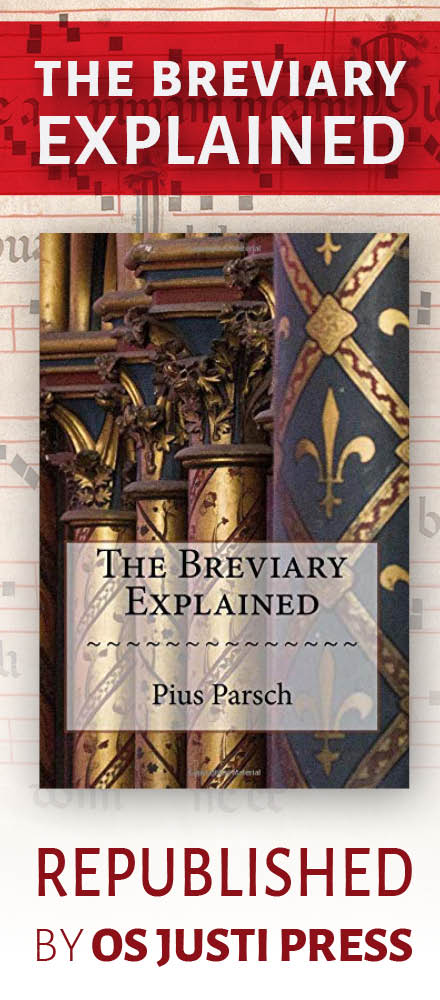Continuing yesterday's post on the First Masses of Fr Joseph Ratzinger, his brother Georg, and their friend Fr Rupert Berger, this is how the local newspaper, the Traunsteiner Wochenblatt, reported on the occasion of the Primiz (for an explanation of that term cf. the first post) of Fr Berger on 1 July 1951, Feast of the Precious Blood (and you just have to love the good, old-fashioned tone):
Impressive already was the procession which conducted the young man of God to St Oswald's church. Lead by the city music-band, and the banners of the associations, followed by the high clergy, there then strode the Reverend Primiziant Rupert Berger, assisted by his confrères, the Reverend Deacons Joseph and Georg Ratzinger, in solemn procession, followed by the parents and guests of the family, headed by Dr. Hundhammer, President of the Landtag [Bavarian Parliament]. The cortège was bordered by confirmation children with garlands

There were so many people - the newspaper quotes the Bavarian saying "To attend a Primiz, you may walk down a pair of soles" - that not all fitted into the church, so loudspeakers had been deployed in the town square, which was richly decorated and had been specially illumined the night before.
Here now are the pictures of the Solemn Mass, including those I already included in the first post:

The epistle:

 Celebrant and ministri at the incredibly lavishly adorned high altar:
Celebrant and ministri at the incredibly lavishly adorned high altar:

The Primizen of the brothers Ratzinger took place on the following Sunday, 8 July 1951, but the celebrations really began on the evening before: About 1000 people came to the house of the Ratzingers in Hufschlag outside Traunstein, where the youth of the parish under the Regens chori Dr. Hogger sang canons and polyphonic pieces and the city parish priest, dean Els, delivered an address. The next morning began with the Primiz of Fr Joseph Ratzinger, who together with his brother had been led in procession into the town through the festively decorated main street and received in the city square by the clergy. The First Mass of Fr Joseph Ratzinger was celebrated as a community Mass with the special participation of the youth and youth Communion [remember that in those days, very frequent Communion was still rare, and at least in Germany it was common to have regular community Masses for various groups of the parish, at which all members of that group would, having made their Confession before, receive Holy Communion]. It began at 7 a.m.
At 9.30 a.m. followed the First Mass of Georg. This was held as a Missa Sollemnis, with Jospeh as deacon, and their friend Fr Berger, the celebrant of the Sunday before, as subdeacon. The preacher was the Religion teacher Studienrat Pöhlein [in those days there were so many priests, that many of them were Religion teachers at public schools; in fact, it was common to have a priest as Religion teacher in school]. The musical setting was Haydn's Nelson Mass.
After Mass, a festive dinner was had by all in the "Sailer Keller" [in case you would also like to eat there, have a look here; they inform us that larded roast veal was served]. After that, everyone went back to church for the afternoon devotion, and to receive the Primiz blessing:
























